I worked for Cavalry Arms Corp from 2001 until it ceased operations in June of 2010, beginning as shop help and ending as Vice President of the company. During that time I was able to participate in all aspects of manufacturing, product testing, warranty and repairs, and product improvement. It is funny now to think about this all in a historical context, because at the time we were just running a business. My goal in writing this is to provide the firearms community with the historical context of the CAV-15 receiver and it’s various revisions over that time frame. Working on the CAV-15 receiver was a learning experience for everyone involved; from where it began to where it ended up as a durable, reliable product was a long journey. In an ideal world the CAV-15 MKII would have been what the first CAV-15s were released as. Revisions and enhancements were incorporated constantly as issues were identified and resolved. The CAV-15 MKII has remained largely unchanged since it was released in late 2003.
Origin
The history of Cavalry Arms and the CAV-15 begins with Shawn Nealon. Nealon’s parents owned an injection molding and mold manufacturing company. Nealon would learn about injection molding, machine work, and manufacturing working for his parents. Nealon grew up with an interest in firearms including hunting, target shooting, and serving as a rifle instructor at Boy Scouts summer camps. Not long after High School, Nealon enlisted in the US Army and served in the first Gulf War in the 1/7 CAV as a Cavalry Scout. As a Cavalry Scout Nealon learned to appreciate the benefits of lightweight equipment and minimizing the weight one carried in the field. After the Gulf War, Nealon remained active duty for a period of time, and later in the Arizona National Guard. Nealon spent some time as a unit armorer. In civilian life, Nealon spent some time working for Accumatch, a company that manufactured firearms accessories, then as a partner in Advanced Tactical Firearms (which was later bought by Armscor). After the sale of Advanced Tactical Firearms, Nealon founded Cavalry Arms (named after his branch of service) and began working on what would become the CAV-15 receiver.
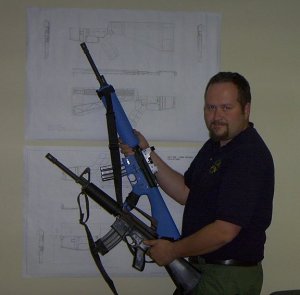
Nealon with CAV-15 MKI and MKII and prints circa 2003.
CAV-15 “MKI”
The CAV-15 injection molded AR15 receiver was first unveiled by Cavalry Arms at the 2000 Soldier of Fortune Convention in Las Vegas, Nevada. The first CAV-15 receivers shipped to consumers in December of 2000.
All CAV-15 receivers were injection molded in two halves from glass filled nylon 6, but the design went through 4 generations of revisions as assembly techniques were perfected and issues with the product addressed.
CAV-15 “MKI” Generation 1: The plastic of these receivers was untextured, and the halves were assembled together using screws only. Very few of these receivers remain in existence, most were remanufactured as later versions.


CAV-15 “MKI” Generation 2: The plastic of these receivers was untextured, and the halves were assembled together using a combination of screws and sonic welding. Very few of these receivers remain in existence, most were remanufactured as later versions.
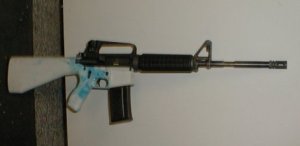
CAV-15 “MKI” Generation 3: The plastic of these receivers was untextured, and the halves were assembled together using screws and more sonic welding. Internal structural enhancements were incorporated as well.
Note the longer reinforced area at the back of the stock. This was added to reinforce the buffer tube that used a rifle length buffer. The rifle buffers were cracking the back end of the buffer tube.
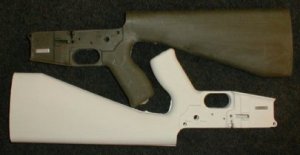
CAV-15 “MKI” Generation 4: Same as the Gen3, except texturing was added to the plastic.
Colors: Cavalry Arms made receivers in a wide varieties of colors including Black, OD Green, Desert Tan, Purple, Yellow, Blue, and Pink. Cavalry Arms got into manufacturing AR15 furniture out of necessity to have matching handguards for its lower receivers. Later the OEM side of manufacturing handguards, buttstocks, and pistol grips for most of the industry would make up the bulk of Cavalry Arms’ sales compared to the CAV-15.
Speed Pins: To reduce scrap rate and increase product durability, Cavalry Arms switched from standard military style take down pins to “Speed Pins” that have the spring and detent built into them. The hole for the standard rear spring/detent was found to be a fail point that could crack all the way into the pistol grip. The front spring/detent area was prone to chipping. Speed Pins are still standard mil-spec diameter. Some Gen3 and roughly half of the Gen4 receivers in existence use these pins. All CAV-15 MKIIs use speed pins.
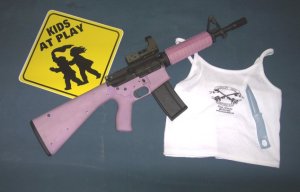
Shortened Receivers: The CAV-15 “MKI” had a 14.5″ length of pull, making it longer than an A2 stock. To meet the demand for requests for shorter stocks, Cavalry Arms offered stock shortenings for their receivers making them roughly A1 length. The process involved chopping off the end of the stock, running a delrin plug into the buffer tube that the buttplate would screw into. Screws were run into the sides of the stock into the plug for structural support. This process also made the receiver use a carbine buffer system. The popularity of this modification resulted in the A1 length of pull on the CAV-15 MKII.
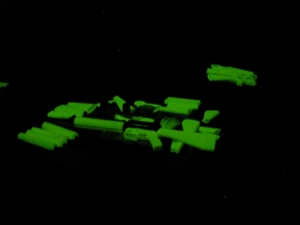
Seven Glow in the dark receivers were made and given to company investors and staff in 2002.
CAV-15 “MKI” receivers were discontinued in February of 2003 with the announcement of the upcoming CAV-15MKII at SHOT Show. Existing inventory of CAV-15 MKI receivers was sold off to wholesalers. The CAV-15 MKII replaced the CAV-15 “MKI” in the Cavalry Arms Product line.
CAV-15 MKII
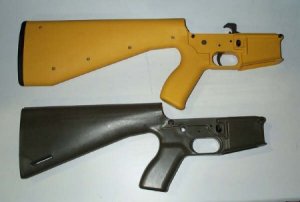
CAV-15 “MKI” receiver (top), with its successor the CAV-15 MKII (bottom)
CAV-15 MKII receivers were released in November of 2003, replacing the CAV-15 in Cavalry Arms Corp’s product line. The original CAV-15s were called “MKI” retroactively to establish their difference from the CAV-15 MKII. Cavalry Arms Corp. sold CAV-15 MKIIs until it gave up its FFL in March of 2010
The delay between discontinuing the CAV-15 MKI and release of the CAV-15 MKII was caused by the fact the CAV-15 MKII was originally to use the same sonic welding process as the MKI. It did not work and the parts wouldn’t stay together. The decision was made to switch to Linear Vibration Welding, and the mold was modified to accommodate for this different process. Ultimately, the delay was worth it as Linear Vibration Welding was faster and more consistent, producing a stronger weld. The machine required for this process was significantly more expensive however.
CAV-15 MKIIs are the most prolific CAV-15 receiver with thousands having been produced. Standard colors included Black, OD Green, Coyote Brown, Foliage Green, and Dark Earth. Special production runs in Pink, Light Blue, Dark Blue, Blaze Orange, Electric Green, Pigeon Gray, Urban Gray, Yellow, and others. Some colors are much more rare than others. 11 Glow in the Dark MKIIs were also made.
The CAV-15 MKII was also produced under marking variances for Sabre Defence as the SR-15 “Light Sabre” and for Eagle Arms as the M15P. Both of these were only available in black.
CAV-15 MKII Receivers were injection molded from glass filled nylon 6, a polymer material very similar to that used by other firearms companies. Polymer offers unsurpassed corrosion resistance, finish durability. and is significantly lighter than aluminum based receivers.
The receivers were molded in two halves and assembled using a linear vibration welding process. Linear vibration welding formed the two halves into one solid piece. Every contact surface between the two halves was bonded together with a weld that was even stronger than the parent material.
CAV-15 MKII Receiver Features:
• A1 Length integral Stock (5/8″ shorter than A2) with sling loop. 13″ Length of Pull.
• Carbine buffer system (reinforcement ribbing behind the buffer tube area to absorb impact)
• Ergonomically enhanced integral pistol grip
• Wider magazine well capable of accepting .45 Greasegun magazines with caliber conversion upper receivers and magazine blocks. Standard AR15 magazines can be used without modifications.
• Receiver weight (complete) is 1 full pound lighter than complete aluminum receiver with A2 stock
• Uses all standard mil-spec parts with the exception of the take down pins. The front pivot and rear pins are a Quick Take down style with Detents built into them, This allows for quick and easy removal of the pins while maintaining a positive lock.
Other Notes:
Serial Number Tags: Sometime in 2008 Cavalry Arms changed the serial number tag to comply with new BATF guidance to make them more tamper proof. Many polymer firearms manufacturers made similar changes around the same time; look at older Glocks vs newer Glocks for example.
Safety Selector Spring and Detent Hole: The hole for the safety selector spring and detent is drilled from the top down into the pistol grip on the CAV-15 receiver. Later MKII receivers had the upper half of this hole formed in the mold to make production easier. The preformed U shaped hole in this area served to help center the mill or drill press for drilling the hole down into the grip. It also prolonged drill life and prevented the drill from walking as it went down.
Single Point Sling Slot: Cavalry Arms offered a factory service to slot the receiver to accept a single point sling
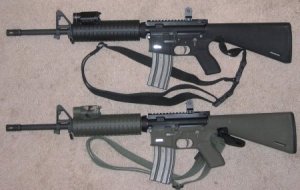
CAV-15 MKII Shortened Receiver by Echo 93
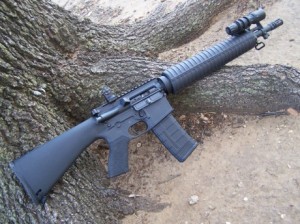
Joe Elledge of Echo 93 was authorized by Cavalry Arms to perform modifications to the CAV-15 receiver including shortening the stock and modifying the pistol grip
CAV-15 MKIII Prototype
Cavalry Arms Corp. exhibited a prototype CAV-15 MKIII at the 2008 SHOT Show. This prototype showcased several new features:
• 9.5″ Length of Pull Stock, that could be extended with spacer plates.
• Club foot stock for supported shooting
• Redesigned pistol grip allowing for a higher hold
• Texture and finish enhancements
Unfortunately Cavalry Arms Corp. was never able to bring this receiver to market. Only one prototype existed and it was destroyed.
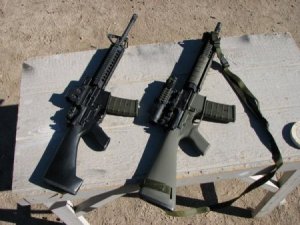
CAV-15 MKIII prototype (left), CAV-15 MKII (right)
Sale to GWACS Armory
I purchased the CAV-15 and CAV-15 MKII Mold/Tooling when Cavalry Arms was closing operations in mid-2010. I was intending to manufacture them under my own company. After six months of interviews and meetings with BATF, and no definite answer on getting an 07 FFL manufacturing license, I elected to drop my application and sell the CAV-15 MKII Mold/Tooling. GWACS Armory of Tulsa, OK eventually purchased it in December 2011, and began manufacturing operations in 2012. GWACS is currently offering service and support for existing CAV-15 type receivers if you already own one.
Update March 2019
In the few years the CAV-15 MKII had been off the market, other lesser polymer designs that did not use an integrated buffer tube and stock became prevalent. These designs developed a bad reputation for breaking. Once GWACS resumed production of the CAV-15 MKII reintroducing it was made difficult by general public ill-will against polymer receivers in general.
I worked with GWACS helping them with sales and general consulting/product knowledge. To address some of the durability concerns, in 2014 I made this video with my friend Karl Kasarda, who would later go on to start InRange TV with Forgotten Weapons’ Ian McCollum:
Sales continued at a moderate pace for GWACS until in 2017 InRange TV announced their What Would Stoner Do Project
GWACS Sold out of CAV-15 MKII Receivers by the summer of 2018 thanks to the interest generated by InRange. Unfortunately, the CAV-15 MKII was worn out at this point. GWACS announced that they intended to develop and release 2 new models and posted this message mid 2018:
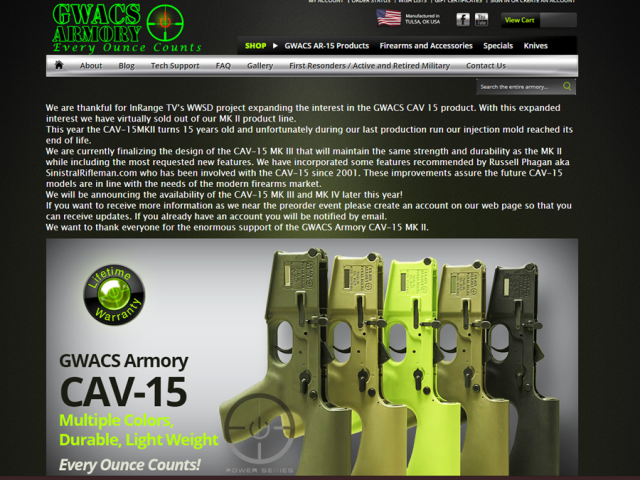
In January of 2019 these messages were posted to the GWACS Facebook page:
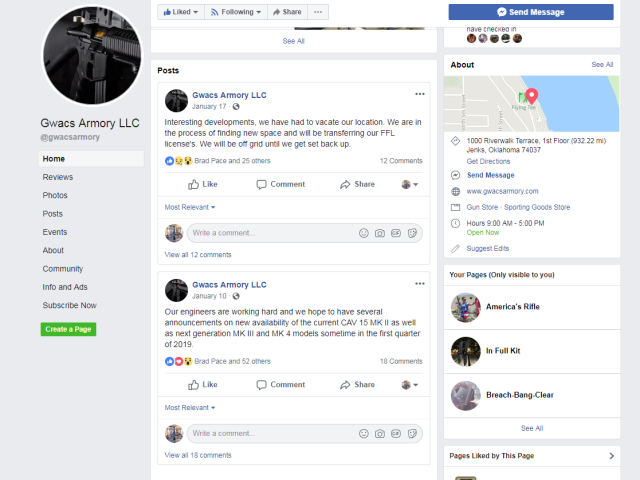
I have not had any direct contact with GWACS for some time now. My Point of Contact no longer works for that company, and the president never responded when I reached out.
What is the future of the CAV-15 Receiver? As long as I’m alive the concept of a CAV-15 style receiver is not dead. Be patient and stay tuned…

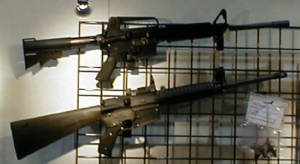
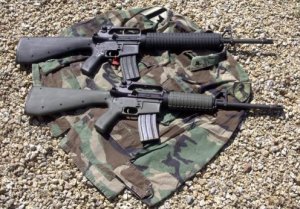
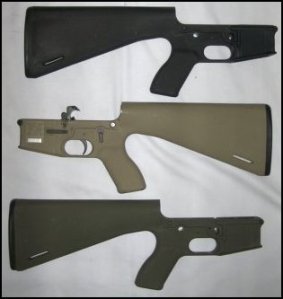

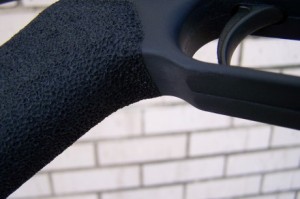
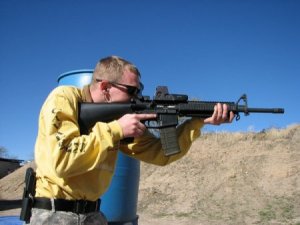
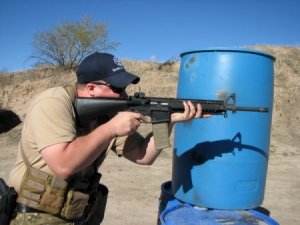
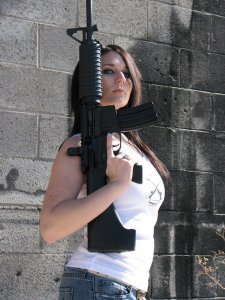
You must be logged in to post a comment.